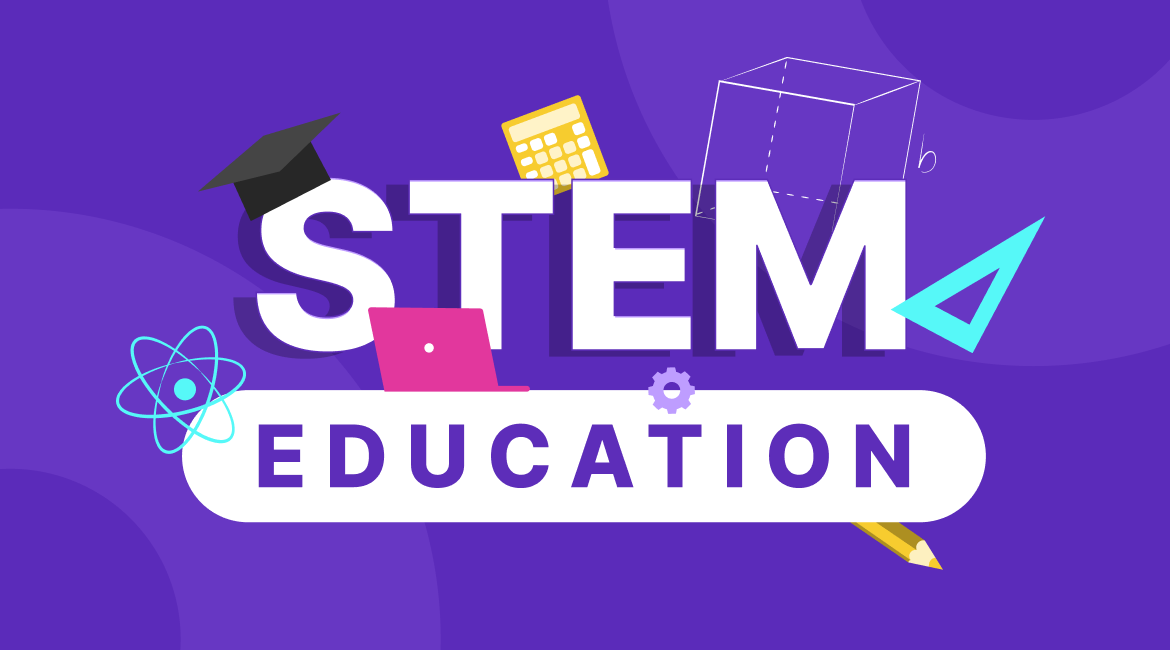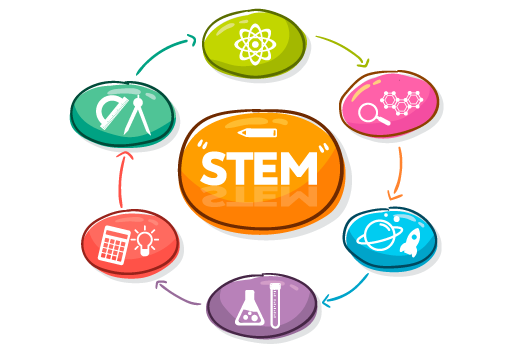Communication with Learners during Sessions and After
Discover how small talks, staying on point, and utilizing chat features can enhance communication with learners, ensuring productive and engaging tutoring sessions.
Read more
STEM is more than just an acronym; it's a passport to the future. Standing for Science, Technology, Engineering, and Math, STEM education is the cornerstone of innovation in our rapidly evolving world. With the increasing reliance on technology and data-driven decision-making, STEM skills have never been more crucial.
So, what exactly is STEM education? STEM isn't just about learning facts and theories. It's an interdisciplinary approach integrating Science, Technology, Engineering, and Math to solve real-world problems. Unlike traditional education, which often isolates these subjects, STEM education aims to blend them, making learning more engaging and relevant.
In a nutshell, STEM education empowers students with the skills they need to excel in the future job market. It goes beyond the classroom, encouraging hands-on experiences and real-world applications of knowledge.

STEM education isn't just a trend; it's a necessity for the future. But why is that? In a world where technology is advancing at breakneck speed, traditional education systems can fall short in preparing students for the challenges and opportunities ahead. STEM education fills this gap by offering a more holistic, hands-on approach to learning. It doesn't just prepare students for jobs that exist today but equips them with the skills to tackle problems we don't even know about yet. So, let's dive into why STEM education is so crucial for the future.
STEM fields are booming, offering a wide range of career opportunities. But let's get specific. From software development to environmental science, the job prospects are endless. In the tech industry alone, roles like data scientists, cybersecurity experts, and software engineers are in high demand. And it's not just about Silicon Valley; these skills are sought after globally.
In healthcare, STEM professionals work on cutting-edge research to develop new treatments and medical technologies. Then there's the energy sector, where STEM roles focus on sustainable solutions and renewable energy sources. And let's not forget about space exploration, robotics, and artificial intelligence. The list goes on!
Moreover, these fields often offer competitive salaries and job security, making them an excellent choice for long-term career paths.
According to the U.S. Bureau of Labor Statistics, employment in STEM occupations is projected to grow by 8.0% from 2019 to 2029. Various factors, including rapid technological advancements and increased focus on research and development drive this remarkable growth.
Despite the growing demand for STEM skills, there's a noticeable skills gap that's hard to ignore. Many employers report difficulties in finding qualified candidates, and this isn't just a problem for big tech companies. Industries from healthcare to manufacturing are feeling the pinch. This shortage is partly due to the lack of emphasis on STEM education in schools, but it's also a societal issue. Addressing this gap isn't just about filling jobs; it's about ensuring that our workforce is prepared for the complexities of a modern, tech-driven world.
STEM education does more than teach facts; it encourages a mindset of inquiry and problem-solving. But what does that really mean? It means students learn to approach problems methodically, breaking them down into smaller parts and applying logical reasoning to find solutions. It's not just about finding the right answer but understanding the process to get there, which is a skill that's invaluable in any career path.
Critical thinking and problem-solving skills aren't just for scientists and engineers; they're vital across industries. Whether you're in marketing, trying to understand consumer behavior, or in healthcare, diagnosing patient symptoms, these skills are universal. They enable professionals to adapt to new situations, troubleshoot issues, and improve processes, making them highly marketable skills in the job market.
In a world where almost every industry is becoming more tech-savvy, STEM education is pivotal in equipping students with essential tech skills. We're talking about more than just knowing how to code. It's about fostering digital literacy, understanding how to analyze data, and adapting to new technologies. Employers highly seek these skills, which are becoming non-negotiables for many careers.
STEM skills can drive social change, and the impact is far-reaching. Whether it's developing clean energy solutions to combat climate change or leveraging data analytics to improve healthcare outcomes, STEM professionals are at the forefront of making a difference.
In environmental science, for example, STEM experts work on sustainable agriculture practices, water conservation, and wildlife protection. In healthcare, they're involved in everything from telemedicine to developing wearable tech that can monitor vital signs.
And it's not just about the big stuff. STEM skills can also drive community-level change. Think local clean energy projects, educational programs that promote science literacy, or even apps that connect people to local health services.
The bottom line? STEM isn't just about individual success; it's about improving lives and building a more equitable world for everyone.

Ready to jump on the STEM bandwagon? Developing these crucial skills isn't as daunting as it might seem. Here's how you can go about it:
Schools undoubtedly lay the foundation, but the role of parents can't be overstated. Encouraging curiosity from a young age can make a world of difference. Provide opportunities for hands-on learning, like simple science experiments at home or coding games that teach basic programming skills. The key is to make STEM fun and engaging so it doesn't feel like "extra work."
If you want to take things up a notch, consider enrolling in STEM-focused extracurricular activities or online courses. Robotics clubs, coding boot camps, and even math leagues offer practical experience and can deepen understanding. Don't underestimate the power of peer interaction; working on STEM projects with others can offer new perspectives and make the learning process more enjoyable.
Another great way to develop STEM skills is through community involvement. Many local organizations offer STEM-related volunteer opportunities. This enhances your skill set and provides a sense of accomplishment and community engagement.
It's no secret that STEM fields have a gender gap. While efforts are being made to close it, there's still a long way to go.
We can expand this section to include not just gender but also socioeconomic diversity. Addressing the underrepresentation of certain groups is crucial for fostering a more inclusive and equitable STEM workforce.
Diversity in STEM isn't just about fairness; it's about bringing different perspectives to solve complex problems. Encouraging more girls and women to enter STEM can lead to more innovative solutions.
Ignoring the importance of STEM can have far-reaching consequences, and we're not just talking about missed job opportunities. A lack of focus on STEM education can lead to a workforce that's ill-equipped to tackle the challenges of the future. From climate change to cybersecurity, the stakes are high.
Moreover, a society that doesn't prioritize STEM education risks falling behind on the global stage. Countries that invest in STEM are more likely to be leaders in innovation and technology, which has a ripple effect on the economy and quality of life.
Innovation is the lifeblood of progress, and STEM skills are its building blocks. But let's dig deeper. Whether it's creating a new app that revolutionizes how we communicate or finding a cure for a disease that has plagued humanity, STEM professionals are at the forefront of innovation.
It's not just about the "Eureka!" moments but the countless hours of research, testing, and collaboration that make them possible. STEM skills enable professionals to navigate complex problems, analyze data effectively, and come up with solutions that are not just innovative but also sustainable and ethical.
STEM education is more than just a buzzword; it's a roadmap for the future. It equips students with the skills they need to succeed in a rapidly changing world. From career opportunities to social impact, the benefits are undeniable. So, whether you're a student, a parent, or an educator, it's time to embrace STEM education and all the possibilities it brings.
Q: What is STEM Education?
A: STEM Education is an interdisciplinary approach to learning that integrates Science, Technology, Engineering, and Math to solve real-world problems.
Q: How can STEM education shape the future?
A: STEM education equips students with the skills needed for future job markets and fosters innovation that can drive social and economic progress.
Q: What are the learning strategies of STEM education?
A: STEM education focuses on hands-on learning, problem-solving, and real-world applications of knowledge.
Q: What is an example of STEM learning?
A: An example of STEM learning could be a robotics club where students apply engineering and programming skills to build a robot.
Discover how small talks, staying on point, and utilizing chat features can enhance communication with learners, ensuring productive and engaging tutoring sessions.
Read moreExplore why more parents are choosing online tutors for their children. From personalized attention to overcoming academic challenges, online tutoring offers a flexible, convenient, and effective approach to enhance your child's learning experience.
Read moreUnlock the full potential of Tutorpeers with our guide: Filter effectively, decode tutor profiles, and ask the right questions for a tailored tutoring experience.
Read more